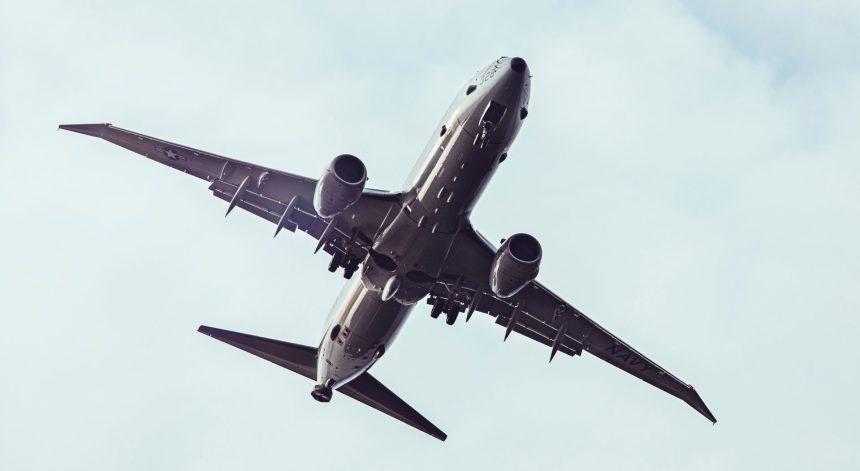A crack was found in the cockpit window of a Boeing 737-800 aircraft recently, forcing an All Nippon Airways (ANA) domestic flight to return to its departure airport. The crack was discovered in one of the six cockpit windows, specifically in the second-to-right window. Thankfully, flight 1182 made it back with all 65 passengers and crew members in one piece. ANA has officially reported the incident to the Japanese Ministry of Land, Infrastructure, Transport and Tourism, and is currently conducting an investigation to determine the crack’s cause. Following a separate incident involving the 737 Max 9 model, this incident has further heightened concerns regarding the safety and reliability of Boeing aircraft.
What Happened and How It Was Investigated
It was about forty minutes after takeoff that the ANA flight 1182’s cracked cockpit window was noticed. The crack was found in the outermost layer of tempered glass, according to ANA. A comprehensive investigation is being carried out by the airline to ascertain the origin of the fracture. Notified parties include the Japanese Ministry of Land, Infrastructure, Transport, and Tourism, among others.
The Dependable Workhorse: The Boeing 737-800
Since its introduction in 1998, the Boeing 737-800 model has maintained an impeccable reputation for dependability and safety. It has been an incredibly reliable aircraft for many airlines all over the globe. The quality control and safety standards of Boeing aircraft have been called into question due to recent incidents.
The 737 Max 9 and an Old Incident
Separately earlier this month, a Boeing 737 Max 9 plane was involved in an incident involving a door plug while flying with Alaska Airlines. In the middle of the flight, the door plug—a component of the fuselage—detached, leaving a hole in the fuselage the size of a refrigerator. While airlines like Alaska Air and United waited for the FAA to provide updated emergency inspection guidelines, 171 Boeing Max 9 aircraft were grounded in the US as a result of this incident.
Examination of Boeing’s Quality Assurance Procedures
An investigation into Boeing’s quality control procedures has been launched by the FAA following the door plug failure incident. In addition, an independent investigation is being carried out by the National Transportation Safety Board (NTSB). To guarantee the safety of Boeing aircraft, these investigations seek to detect any possible breaches in quality control.
Window Integrity: Why It Matters
To ensure the safety of the flight crew and passengers, it is imperative that cockpit windows remain intact. If these windows break or get damaged, it could weaken the plane’s structure, which could have disastrous results. Airline companies and manufacturers must prioritize aircraft safety by conducting inspections and maintenance regularly.
Security Protocols and Rules
To guarantee the utmost safety, the aviation industry is subject to stringent regulations. Aircraft producers and operators are subject to strict regulations imposed by organizations like the Federal Aviation Administration (FAA) and the International Civil Aviation Organization (ICAO). In an effort to reduce potential dangers and maximize safety, these rules govern many facets of airplane construction, operation, and maintenance.
Striving for Perpetual Enhancement in Aviation Safety
The cracked window incident on the ANA flight is just one more reason why aircraft safety must be continuously improved. Aircraft safety features are continually being improved through substantial investments in R&D by manufacturers such as Boeing. Improvements in engineering, materials science, and safety features of aircraft are results of a never-ending cycle of innovation.
See first source: CNN
FAQ
Q1: What happened to the Boeing 737-800 aircraft mentioned in the article?
A1: A crack was found in the cockpit window of a Boeing 737-800 aircraft, causing an All Nippon Airways (ANA) domestic flight (flight 1182) to return to its departure airport. Fortunately, all 65 passengers and crew members were unharmed.
Q2: What is the status of the investigation into the cracked cockpit window?
A2: ANA has officially reported the incident to the Japanese Ministry of Land, Infrastructure, Transport, and Tourism. They are currently conducting a comprehensive investigation to determine the cause of the crack.
Q3: What type of aircraft is the Boeing 737-800, and what is its reputation in terms of safety?
A3: The Boeing 737-800 is known for its impeccable reputation for dependability and safety. Since its introduction in 1998, it has been a reliable aircraft for many airlines worldwide. However, recent incidents have raised concerns about the safety and reliability of Boeing aircraft in general.
Q4: Can you provide more information about the incident involving the Boeing 737 Max 9 aircraft?
A4: Earlier this month, a Boeing 737 Max 9 plane experienced an incident in which a door plug detached during flight with Alaska Airlines, leaving a hole in the fuselage. This incident led to the grounding of 171 Boeing Max 9 aircraft in the US as airlines awaited updated emergency inspection guidelines from the FAA.
Q5: What investigations are currently underway regarding Boeing’s safety and quality control procedures?
A5: The FAA is conducting an investigation into Boeing’s quality control procedures following the door plug failure incident involving the Boeing 737 Max 9. Additionally, the National Transportation Safety Board (NTSB) is conducting an independent investigation to identify any potential breaches in quality control.
Q6: Why is the integrity of cockpit windows essential for aircraft safety?
A6: Cockpit windows must remain intact to ensure the safety of the flight crew and passengers. If these windows break or get damaged, it could weaken the plane’s structure, leading to potentially disastrous consequences. Regular inspections and maintenance are crucial to prioritize aircraft safety.
Q7: What are the regulations governing aircraft safety in the aviation industry?
A7: The aviation industry is subject to stringent regulations imposed by organizations like the Federal Aviation Administration (FAA) and the International Civil Aviation Organization (ICAO). These regulations cover various aspects of aircraft construction, operation, and maintenance to reduce potential risks and maximize safety.
Q8: How is aviation safety continuously improved in the industry?
A8: Aviation safety is continually improved through substantial investments in research and development (R&D) by aircraft manufacturers like Boeing. Ongoing innovation in engineering, materials science, and safety features leads to enhancements in aircraft safety to meet evolving industry standards and challenges.
Featured Image Credit: Photo by Cody Fitzgerald; Unsplash – Thank you!







